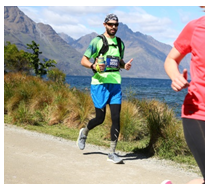This will be a two part series on the running shoe conundrum; we will “stack” up the knowledge and research, have “flexibility” in our ideas and “drop” the hammer on what is recommended via the research! (All puns entirely intended, hands up who has a healthy fetish with running shoes – guilty as charged!)
Over the past few years there has been discussion, research, marketing and objection towards reducing the supportive nature of shoes and getting back to basics – “The Minimalist Movement or The Barefoot Running Movement”. If you are involved in the running community, enjoy reading fitness blogs or magazines and/or have a healthy obsession/fetish with running shoes then you may have heard about this. However a large part of the community hasn’t. So together we will delve further into the black hole that is “running shoes” and hopefully come out the other side refreshed with a newfound knowledge (or strengthening existing knowledge) you can use for yourself, family and friends. It is important to note that I have no vested interests in any shoe company and unfortunately 🙂 get no gratuities from any shoe brand.
In the beginning there was terminology…broadly there are two main terms/groups that most people talk about with running shoes, those being “minimalist” in nature and by virtue of opposing forces…you guessed it maximalist shoes. The way I like to think of the running shoe “groups” is more of a continuum by which there are varying degrees of minimalism – this is called the “Minimalist Index”.
You might be asking: Well Joel, how do I tell what is what? And what is best for me or my child? Great Questions! As with all my blogs my goal is to promote thought and understanding and I will hopefully answer those questions in the coming series.
The “Minimalist Index” was created by a group of Researches to allow a standardized measurement of minimalism within a running shoe. The research consisted of 42 experts from 11 countries and agreement was met on the classification (Esculier, et.al 2015). The index is characterized by 5 main measures of a shoe:
Simply put, the lower the stack height, lighter the weight, lower the heel-toe drop, less motion control (pronation control) technologies and the more flexible the shoe is, the higher the “Minimalist Index”. Now more questions are likely to be popping into your head … like what is the best? What should I be wearing? I have been fitted for my shoes so they are the best right? I could imagine you’re sitting at home (or work) thinking about the next awesome run and now wondering are my shoes the most appropriate and efficient I could be wearing..? All great questions!
If the shoe fits do I wear it? Well…it depends! This is what we will start to discuss next time 🙂
Until then,
Joel
Physiotherapist & Exercise Scientist
Certified Professional with “The Running Clinic”



